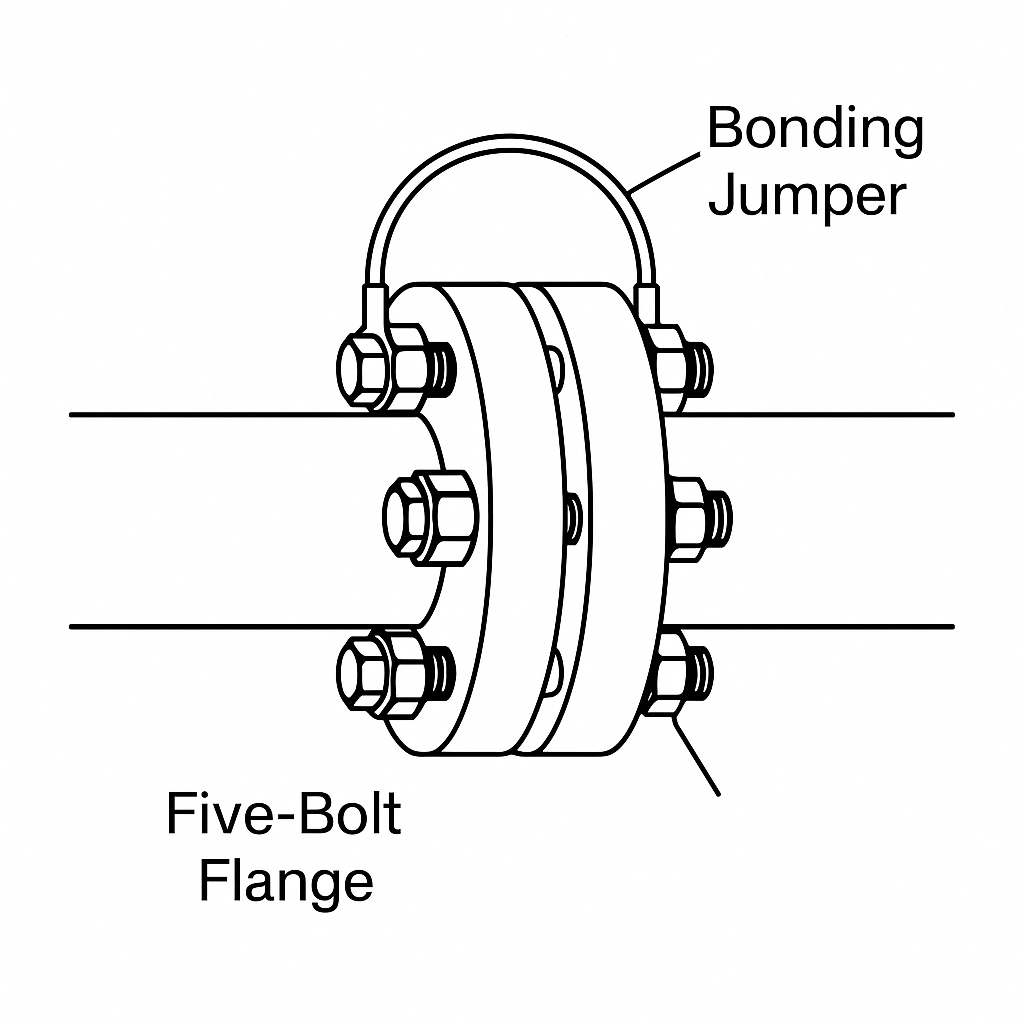Introduction
In industrial piping systems, ensuring electrical continuity and safety is critical—especially in environments where flammable or explosive media are present. One frequently asked question is whether flanges connected by five bolts (or any bolted flange connection) still require bonding straps or jumpers. This article explores the technical rationale and applicable standards behind bonding requirements for flanged joints.
1. Misconception: Bolted Flanges Ensure Electrical Continuity
It is a common but incorrect assumption that bolted flange connections inherently provide sufficient electrical conductivity between pipeline sections. In reality, the metal-to-metal contact offered by flange bolts can be unreliable due to several factors:
Corrosion or rust on flange surfaces or bolts
Paint, coatings, or gaskets interrupting metal contact
Vibration or mechanical stress loosening bolt integrity over time
Contaminants such as oil or dust on the mating surfaces
As a result, depending solely on bolts to maintain a low-resistance electrical path is not recommended, particularly in safety-critical systems.

2. Bonding Requirements in Industry Standards
Several national and international codes mandate the use of dedicated bonding (jump) wires across flange joints to ensure electrical continuity:
Key Standards:
IEC 60079-14 (Explosive atmospheres – Electrical installations design, selection, and erection)
NFPA 77 (Recommended Practice on Static Electricity)
GB 50229-2006 (Code for Fire Protection Design of Petrochemical Enterprises, China)
API RP 2003 (Protection Against Ignitions Arising out of Static, Lightning, and Stray Currents)
These standards require bonding in systems handling:
Flammable or explosive fluids
Non-conductive gaskets or insulating liners
Systems subject to lightning or electrostatic discharge
Zones where spark prevention is essential
Example Clause:
“Bonding jumpers shall be installed across pipe flanges where electrical continuity cannot be assured through mechanical connections alone.” — NFPA 77

3. When Is Bonding Essential?
The need for flange bonding is dictated by risk factors rather than the number of bolts. The following table summarizes typical requirements:
| Scenario | Bonding Required? | Reason |
|---|---|---|
| Flammable/explosive gas or liquid | ✅ Yes | Prevent static accumulation and sparks |
| Non-conductive gasket used | ✅ Yes | Electrical isolation risk |
| External coating on flanges or bolts | ✅ Yes | Interrupts conductivity |
| Regular steel flange with metal gasket, clean contact, non-hazardous media | ❌ Optional (but recommended) | May be acceptable in low-risk environments |
4. Engineering Best Practices
Even in situations where bonding is not strictly required, installing a bonding jumper is considered best practice, because:
It provides a controlled low-resistance path for stray currents
It improves safety compliance during audits
It protects personnel and equipment in case of electrostatic discharges
The cost is minimal, but the safety impact is significant
5. Installation Tips for Bonding Jumpers
Use tinned copper braid or wire, sized according to expected current
Connect with crimped or bolted lugs at both ends
Secure the bonding wire with mechanical protection to avoid physical damage
Ensure low contact resistance at the connection points (clean, uncoated surfaces)

Conclusion
The number of bolts on a flange—whether five, four, or eight—does not eliminate the need for bonding.
If electrical continuity cannot be 100% guaranteed through the mechanical connection alone, a dedicated bonding jumper must be installed, especially in hazardous or regulated environments.
This simple yet crucial step significantly improves the safety, reliability, and compliance of industrial piping systems.
